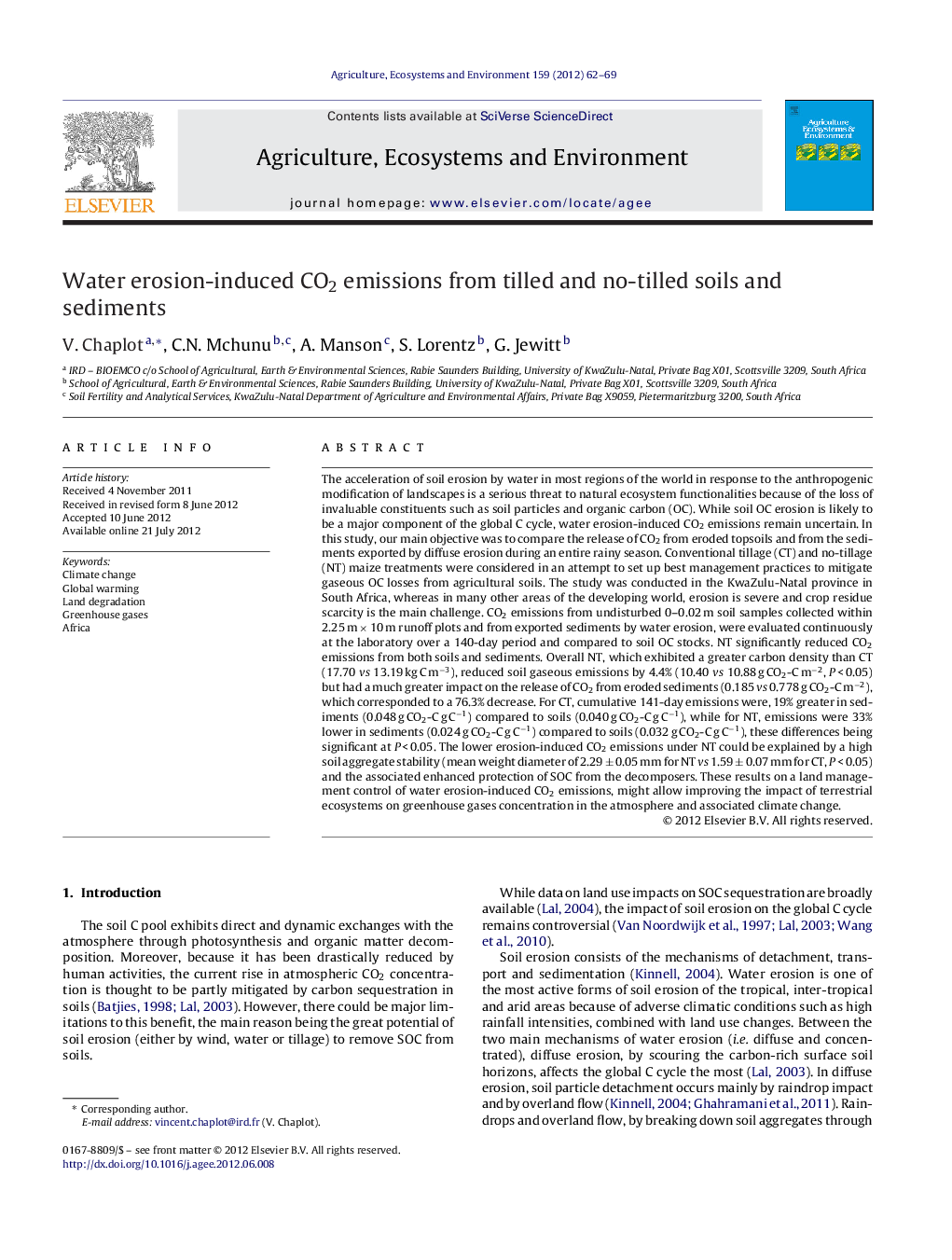| کد مقاله | کد نشریه | سال انتشار | مقاله انگلیسی | نسخه تمام متن |
|---|---|---|---|---|
| 2414427 | 1552093 | 2012 | 8 صفحه PDF | دانلود رایگان |

The acceleration of soil erosion by water in most regions of the world in response to the anthropogenic modification of landscapes is a serious threat to natural ecosystem functionalities because of the loss of invaluable constituents such as soil particles and organic carbon (OC). While soil OC erosion is likely to be a major component of the global C cycle, water erosion-induced CO2 emissions remain uncertain. In this study, our main objective was to compare the release of CO2 from eroded topsoils and from the sediments exported by diffuse erosion during an entire rainy season. Conventional tillage (CT) and no-tillage (NT) maize treatments were considered in an attempt to set up best management practices to mitigate gaseous OC losses from agricultural soils. The study was conducted in the KwaZulu-Natal province in South Africa, whereas in many other areas of the developing world, erosion is severe and crop residue scarcity is the main challenge. CO2 emissions from undisturbed 0–0.02 m soil samples collected within 2.25 m × 10 m runoff plots and from exported sediments by water erosion, were evaluated continuously at the laboratory over a 140-day period and compared to soil OC stocks. NT significantly reduced CO2 emissions from both soils and sediments. Overall NT, which exhibited a greater carbon density than CT (17.70 vs 13.19 kg C m−3), reduced soil gaseous emissions by 4.4% (10.40 vs 10.88 g CO2-C m−2, P < 0.05) but had a much greater impact on the release of CO2 from eroded sediments (0.185 vs 0.778 g CO2-C m−2), which corresponded to a 76.3% decrease. For CT, cumulative 141-day emissions were, 19% greater in sediments (0.048 g CO2-C g C−1) compared to soils (0.040 g CO2-C g C−1), while for NT, emissions were 33% lower in sediments (0.024 g CO2-C g C−1) compared to soils (0.032 g CO2-C g C−1), these differences being significant at P < 0.05. The lower erosion-induced CO2 emissions under NT could be explained by a high soil aggregate stability (mean weight diameter of 2.29 ± 0.05 mm for NT vs 1.59 ± 0.07 mm for CT, P < 0.05) and the associated enhanced protection of SOC from the decomposers. These results on a land management control of water erosion-induced CO2 emissions, might allow improving the impact of terrestrial ecosystems on greenhouse gases concentration in the atmosphere and associated climate change.
► We investigated the impact of tillage on soil and erosion-induced CO2 losses.
► Tilled (T) and no-tilled (NT) maize treatments were considered.
► NT reduced sediment gaseous emissions by 76.3% compared to T.
► There was no significant impact of NT on soil CO2 losses.
Journal: Agriculture, Ecosystems & Environment - Volume 159, 15 September 2012, Pages 62–69